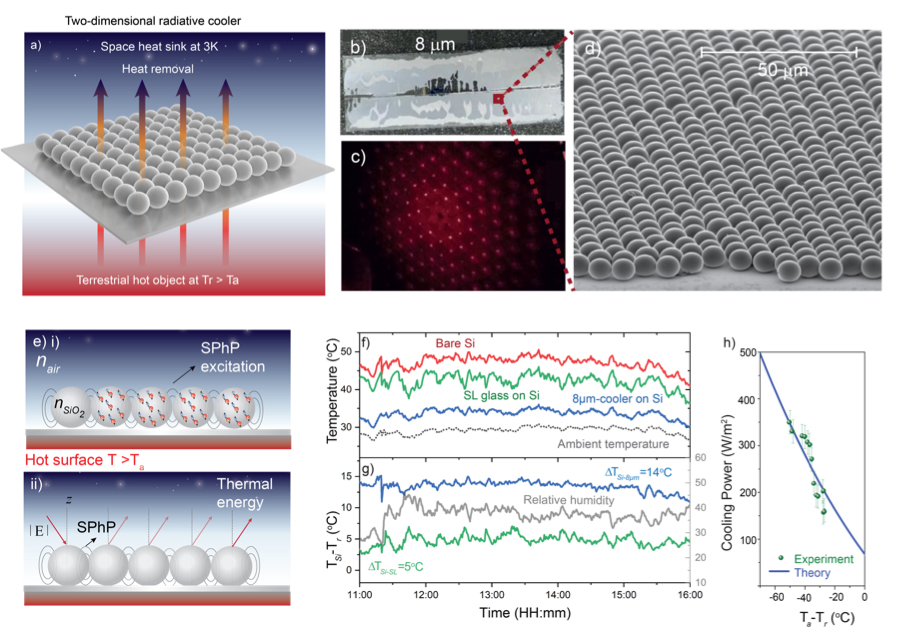Temperature regulation keeps us comfortable and ensures reliable performance of machines, like computers. Cooling systems account for 15% of the global energy consumption and are responsible for 10% of greenhouse gas emissions. Our phononics research led us to a novel 2-dimensional and plastic-free material able to remove heat, cooling down the surface on which it is placed without energy consumption or gas emissions of any kind.
The material is inspired by the Earth’s efficient temperature-regulation mechanism, namely, radiative sky cooling. Although our planet is heated mainly by the sun, it also emits infrared radiation to the outer space, since this kind of radiation is not captured by the atmosphere. Our material is able to cool down a silicon wafer under direct sunlight irradiation by 14 ºC, whereas an ordinary soda-lime glass just lowers it by 5 ºC. It is formed by a single layer of 8 µm diameter self-assembled array of silica spheres, like sand grains but a million times smaller. This layer behaves almost as an ideal infrared emitter, providing a radiative cooling power of up to 350 W/m2 for a hot surface, such as a solar panel. This would remove half of the heat accumulated in a typical solar panel in a regular clear day, which is enough to increase the relative efficiency of a solar cell by 8%. Considering the global solar energy production in 2017, such an efficiency increase would represent enough energy to power the city of Paris during an entire year. The physics behind it is the interaction of phonons (quanta of atomic lattice vibrations) and polaritons (quanta of hybrid light-matter excitation), called surface phonon polaritons (see Fig. 1), which have been studied in transport thermal energy over millimetre distances by researchers in France. The layer thickness of our material, which is six times thinner that state-of-the-art radiative cooling materials, is an added bonus. This research was awarded the Collider Tech Award 2019, a prize that encourages further development of this invention, and is protected by an European patent application.
Reference
